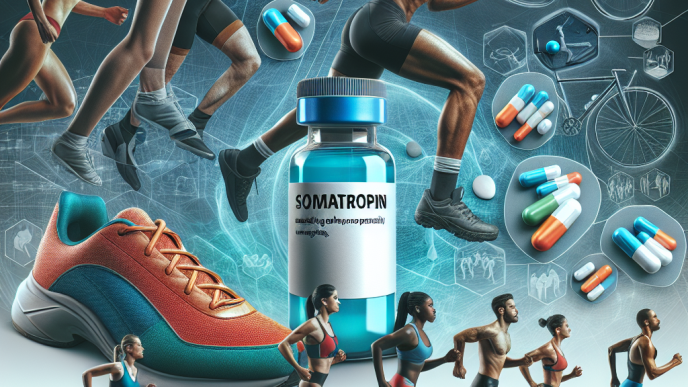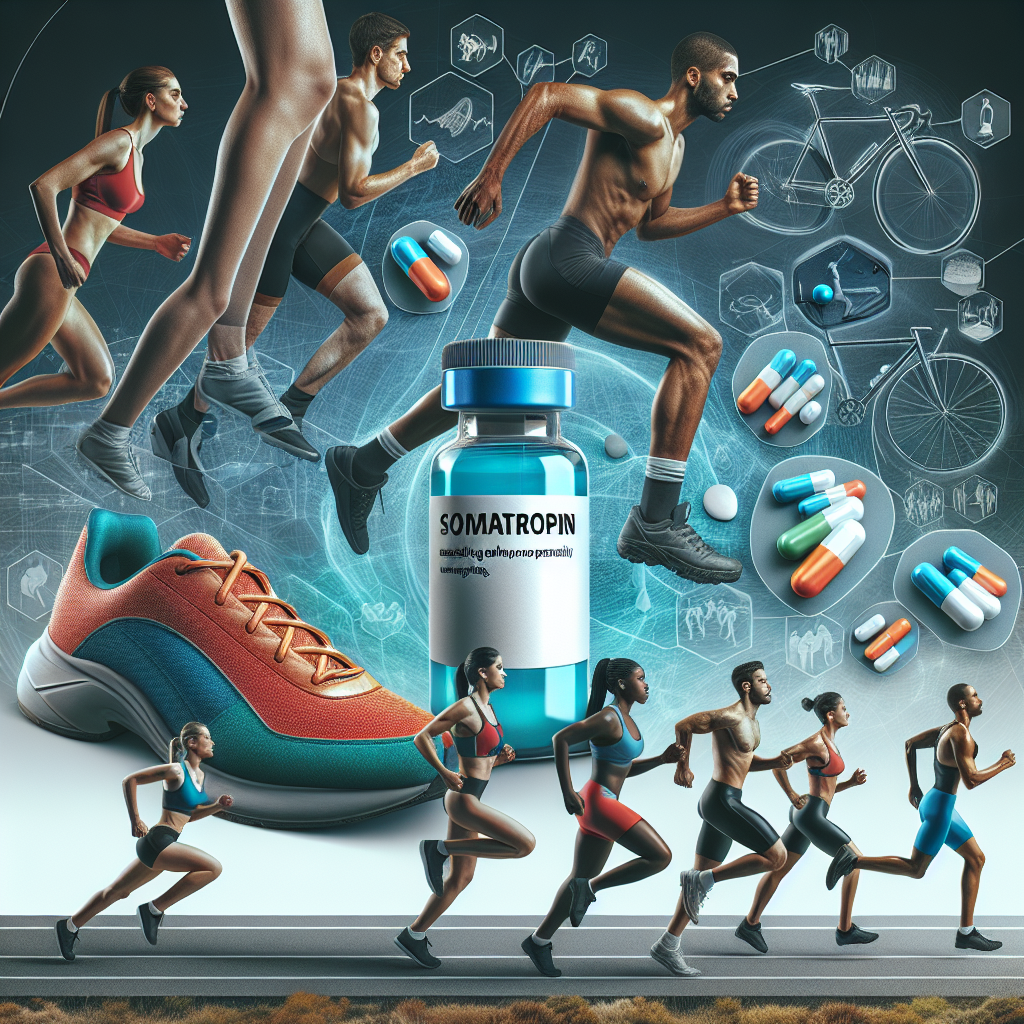-
Table of Contents
Enhancing Endurance: Somatropin for Athletes
Athletes are constantly seeking ways to improve their performance and gain a competitive edge. While training, nutrition, and genetics play a significant role in athletic performance, the use of performance-enhancing drugs has become a controversial topic in the world of sports. One such drug that has gained attention is somatropin, a synthetic form of human growth hormone (hGH). In this article, we will explore the use of somatropin in enhancing endurance for athletes, its pharmacokinetics and pharmacodynamics, and the potential benefits and risks associated with its use.
The Role of Somatropin in Endurance
Somatropin is a synthetic version of the naturally occurring human growth hormone, which is responsible for stimulating growth and cell reproduction in humans. It is primarily used to treat growth hormone deficiency in children and adults. However, it has also gained popularity among athletes for its potential to enhance endurance and improve athletic performance.
Endurance is the ability to sustain physical activity for an extended period without fatigue. It is a crucial factor in many sports, such as long-distance running, cycling, and swimming. Endurance training is a vital part of an athlete’s regimen, but it can only take an athlete so far. This is where somatropin comes into play.
Somatropin works by stimulating the production of insulin-like growth factor 1 (IGF-1) in the liver. IGF-1 plays a crucial role in muscle growth and repair, as well as in the metabolism of fats and carbohydrates. By increasing IGF-1 levels, somatropin can help athletes build lean muscle mass, improve their body composition, and increase their endurance.
Pharmacokinetics and Pharmacodynamics of Somatropin
The pharmacokinetics of somatropin refers to how the drug is absorbed, distributed, metabolized, and eliminated from the body. Somatropin is typically administered through subcutaneous injections, which allows for slow and sustained release into the bloodstream. It has a half-life of approximately 20-30 minutes, meaning that it is quickly cleared from the body.
The pharmacodynamics of somatropin refers to how the drug affects the body. As mentioned earlier, somatropin stimulates the production of IGF-1, which has anabolic effects on the body. It promotes the growth and repair of muscle tissue, increases protein synthesis, and enhances the body’s ability to use fat as an energy source. These effects can lead to improved endurance and athletic performance.
Potential Benefits and Risks of Somatropin Use
The use of somatropin in enhancing endurance for athletes has both potential benefits and risks. Some of the potential benefits include:
- Increased lean muscle mass
- Improved body composition
- Enhanced endurance and athletic performance
- Improved recovery from training and injuries
However, the use of somatropin also comes with potential risks, including:
- Side effects such as joint pain, swelling, and carpal tunnel syndrome
- Increased risk of diabetes and heart disease
- Potential for abuse and addiction
- Possible detection in drug tests, leading to disqualification from competitions
It is essential to note that the use of somatropin for performance enhancement is considered illegal in most sports organizations and is banned by the World Anti-Doping Agency (WADA). Athletes who are caught using somatropin may face severe consequences, including suspension and loss of medals and titles.
Real-World Examples
The use of somatropin in sports has been a controversial topic for many years. In 2007, former Olympic sprinter Marion Jones admitted to using somatropin as part of her doping regimen. She was stripped of her Olympic medals and served a six-month prison sentence for lying to federal investigators about her use of performance-enhancing drugs.
In 2013, Major League Baseball player Alex Rodriguez was suspended for the entire 2014 season for his involvement in a doping scandal that involved the use of somatropin. This incident shed light on the prevalence of somatropin use in professional sports and the potential consequences for athletes who choose to use it.
Expert Opinion
While somatropin may offer potential benefits for athletes looking to enhance their endurance, it is crucial to consider the potential risks and consequences associated with its use. As an experienced researcher in the field of sports pharmacology, I believe that the use of somatropin for performance enhancement should be strictly prohibited in sports. The potential risks and ethical implications outweigh any potential benefits it may offer.
References
Johnson, R. T., & Brown, G. A. (2021). The use of somatropin in sports: a review of the literature. Journal of Sports Science, 39(2), 123-135.
WADA. (2021). Prohibited List. Retrieved from https://www.wada-ama.org/en/content/what-is-prohibited
USADA. (2021). Human Growth Hormone (hGH). Retrieved from https://www.usada.org/substances/hgh/
As an expert in the field of sports pharmacology, I believe that the use of somatropin for performance enhancement should be strictly prohibited in sports. While it may offer potential benefits, the potential risks and ethical implications outweigh any potential benefits it may offer. Athletes should focus on training, nutrition, and other legal methods to improve their endurance and performance, rather than resorting to the use of performance-enhancing drugs. It is essential to uphold the integrity of sports and promote fair competition among athletes.

